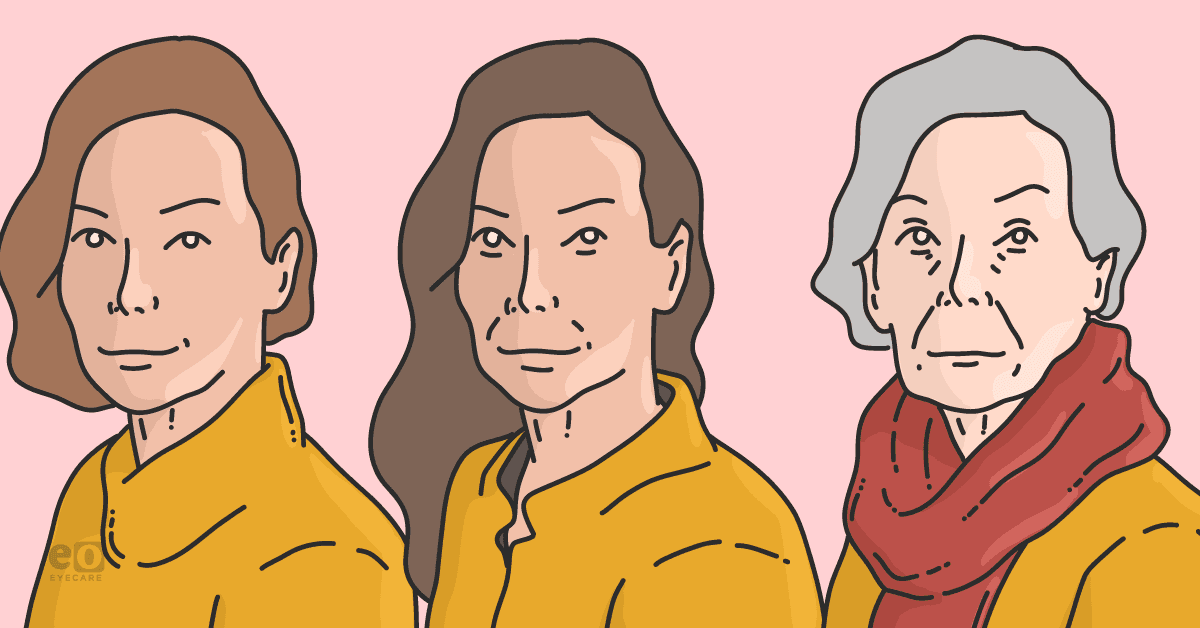The domain of anti-aging, presently an emergent and robust division of biomedical science, piques not only public curiosity but also substantial research funding.
Central to this pursuit is the identification of dependable aging biomarkers that could unravel the complexities of the aging process while paving the way for preventive methodologies and treatment modalities, all converging on the ultimate objective of promoting healthier, extended lifespans.
The inception of eyeAge
A novel endeavor titled eyeAge, developed by scientists at the Buck Institute for Research on Aging in collaboration with Google Health and Zuckerberg San Francisco General Hospital,1 presents a compelling fusion of retinal imaging and artificial intelligence (AI).
This initiative capitalizes on the prowess of deep learning, an advanced AI modality, to estimate an individual's “biological age” with unprecedented accuracy, eclipsing the capabilities of current methodologies.
The intersection of ophthalmology and eyeAge
Drawing upon the skills ophthalmologists and optometrists already possess, eyeAge further utilizes the eye's role as a window into systemic health. An ophthalmologist or optometrist’s existing ability to visualize vasculature and nerves in detail through comprehensive eye examinations is crucial in detecting early signs of systemic conditions like diabetes, hypertension, and neurodegenerative diseases and may be heightened by the capabilities of eyeAge.
Thus, the innovation has the potential to expand on traditional ocular health examinations, potentially assisting in identifying systemic conditions during their initial stages, along with quantifying a person’s "biological age."
Unraveling the concept of biological age
The concept of “biological age” emerges from the intent to quantify cellular and molecular alterations for an in-depth understanding of an individual's health status and lifespan, transcending the confines of chronological age.2
To illustrate, an individual with significant health risk factors, such as a poor diet, chronic alcohol intake, smoking, or a sedentary lifestyle, may present compromised cardiovascular and metabolic health compared to an active individual with balanced lifestyle habits.
Despite being 50 years of age, the former could exhibit a biological age of 60, while the latter could have a biological age of 45.
Limitations of existing tools for biological age estimation
Numerous tools are currently available to estimate a patient’s biological age, most of which require invasive procedures such as blood collection. Existing techniques predominantly focus on genetic analysis, scrutinizing elements like DNA methylation patterns and chromosomal telomere lengths, necessitating intricate laboratory procedures such as quantitative polymerase chain reaction (qPCR) and DNA microarray analysis.3,4
Other studies involve the analysis of metabolomics and proteomics, i.e., using mass spectrometry, nuclear magnetic resonance spectroscopy, gel electrophoresis, and other laboratory techniques to examine a patient’s complete profile of small molecule metabolites and genomic protein products at a certain point in time.5
However, the advent of non-invasive modalities like eyeAge, which save time and money, promise to revolutionize our comprehension of biological aging.
AI and deep learning in eyeAge
EyeAge operates based on the principles of artificial intelligence and deep learning, a type of machine learning where a computer learns from experience and repeated exposure to examples.
This design allows deep learning models to absorb vast amounts of data, enhancing their performance with increased input. In essence, these models can identify patterns with escalating accuracy and complexity over time.
Performance of eyeAge
Researchers trained eyeAge on extensive databases of retinal images, specifically the EyePACS dataset and the UK Biobank. Impressively, their model demonstrated the ability to predict an individual's chronological age with remarkable accuracy solely from these images, surpassing the precision of existing biological aging clocks, including genomic analyses.
Beyond mere age prediction, their model also correlated with an individual's health status. If the model estimated an individual as "older" than their chronological age, this suggested a potentially higher mortality risk. This measure was termed “eyeAgeAccel.”
The validity and accuracy of "eyeAgeAccel” were checked through a multifaceted evaluation process. A robust correlation between eyeAge (underpinning eyeAgeAccel) and chronological age in the databases provided preliminary evidence of accuracy.
Validating results from eyeAge
Further validation was facilitated by a comparative analysis with phenoAgeAccel, a recognized clinical blood marker-based aging clock, underscoring the uniqueness of the information captured by eyeAgeAccel. A positive correlation between eyeAgeAccel and morbidity and mortality, as revealed through Cox proportional hazards regression analyses, underscored its relevance in assessing aging-related health risks.
Lastly, longitudinal analysis showing the model's ability to track aging progression in repeat patients reinforced its potential as a reliable tool for capturing temporal changes in aging. Put simply, eyeAge was able to predict that patients were aging through subsequent scans accurately. This multifaceted validation emphasizes the potential utility of eyeAgeAccel as a novel and independent biomarker of biological aging.
Future directions of eyeAge research
Unveiling a notable development, the researchers involved in the eyeAge initiative successfully identified genes that correlated with age predictions, thereby suggesting a probable genetic impact on retinal aging.
To validate their findings, they employed a Drosophila model, and interestingly, the experimental knockout of one such gene resulted in a deceleration of age-associated vision decline. Pre-existing research affirms that the down-regulation of this gene can potentially augment overall lifespan,6 thereby emphasizing the gravity of these novel findings.
Conclusion
This groundbreaking research is inherently valuable, contributing significantly to the ever-expanding knowledge base surrounding the genetic underpinnings of the aging process.
Moreover, it provides a compelling proof-of-concept indicating that eyeAge is poised to play a crucial role in future research, particularly in deciphering underlying genetic factors that may be curtailing human lifespan and exacerbating health deterioration.
Thus, the promise of eyeAge extends beyond mere age prediction, ushering in a new era of deep, genetically-guided insight into the complex mechanisms of aging.
